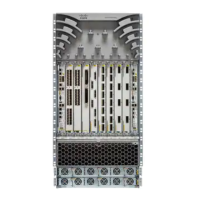SUMMARY STEPS
1.
configure
2.
ipsla reaction operation operation-number
3.
react [packet-loss [dest-to-source | source-to-dest]]
4.
commit
DETAILED STEPS
PurposeCommand or Action
configure
Step 1
Configures certain actions that are based on events under the
control of the IP SLA agent. The operation-number argument
ipsla reaction operation operation-number
Example:
RP/0/RSP0/CPU0:router(config)# ipsla reaction
operation 432
Step 2
is the number of the IP SLA operations for the reactions that
are configured. The range is from 1 to 2048.
Specifies an element to be monitored for a reaction.react [packet-loss [dest-to-source | source-to-dest]]
Step 3
Example:
RP/0/RSP0/CPU0:router(config-ipsla-react)# react
The reaction on packet loss value violation is specified. The
following options are listed for the packet-loss keyword:
• dest-to-source—Specifies the packet loss destination to
source (DS) violation.
packet-loss dest-to-source
RP/0/RSP0/CPU0:router(config-ipsla-react-cond)#
• source-to-dest—Specifies the packet loss source to
destination (SD) violation.
commit
Step 4
Configuring Triggers for Round-Trip Violations
Round-trip time (RTT) is a monitored value of all IP SLA operations. Events, for example, traps, can be
triggered when the rtt value rises above a specified threshold or falls below a specified threshold. You can
configure rtt as a monitored element.
SUMMARY STEPS
1.
configure
2.
ipsla reaction operation operation-number
3.
react [rtt]
4.
commit
Cisco ASR 9000 Series Aggregation Services Router System Monitoring Configuration Guide, Release 4.2.x
256
Implementing IP Service Level Agreements
Configuring IP SLA Reactions and Threshold Monitoring

